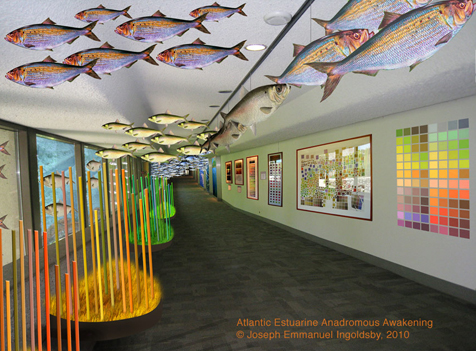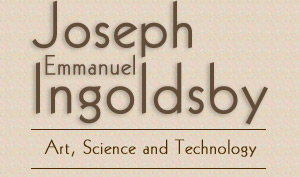
Anadromous Fish Estuarine Migration
The Atlantic Coast Exhibit
Narrative:
To create an estuarine environment within the long passageway of a Science Center,
where anadromous smelt, herring and shad would be suspended from the ceiling
and affixed to the glass windows. Images of spawning herring would be projected
on the end wall. Hundreds of color blades of Spartina grass are clumped on a
meander along the windowed wall, creating a timeline of seasonal color in the
salt marsh. The Atlantic Coast uses color as a means of defining photosynthesis
by charting the seasons of emergence, growth, seeding and senescence in plants
over time within the coastal landscape. Nutrients, water, salinity, oxygenation,
topography, temperature and seasonal change affect the color palette of the plants.
Color serves as a barometer of the systems health. I shall chart hundreds of
colors in the Spartina marsh through the seasons. Landscape Mosaics examines
color, charted in the field using Pantone color system to create blended pixel
color palettes, which became the foundation for the pieces in this collection.
Panels from the Requiem for a Drowning Landscape and Landscape Mosaics complete
the installation. The seasons are charted and anadromous fish return to the tidal
waters to spawn.
The proposed series on view at the Science Center gallery examines,
explains and illustrates issues as climate change, fragmentation of the landscape,
broken trophic cascades, species shifts and extinction, and the loss of the natural
and cultural landscape. Return
|









